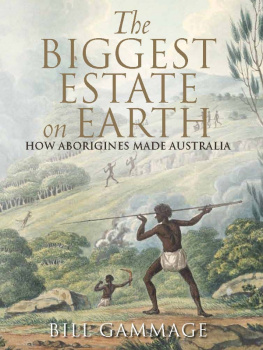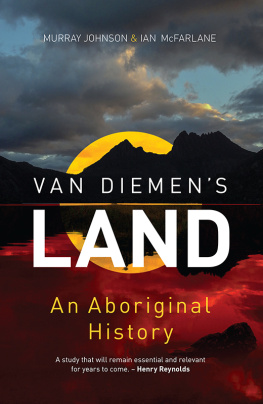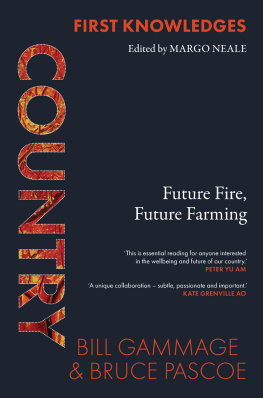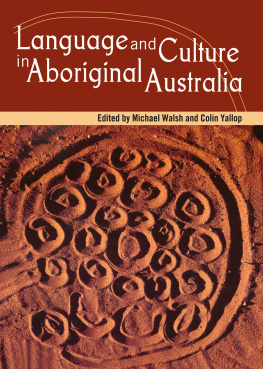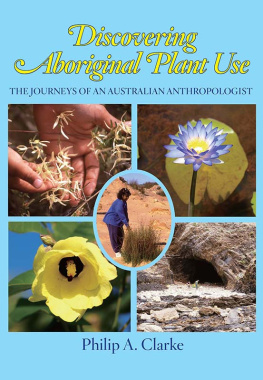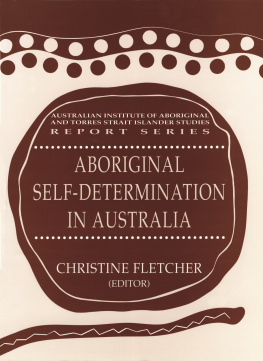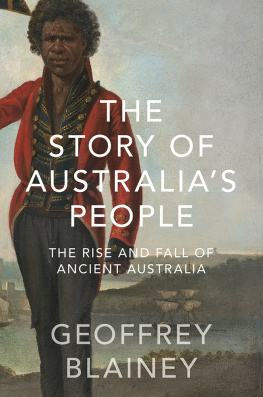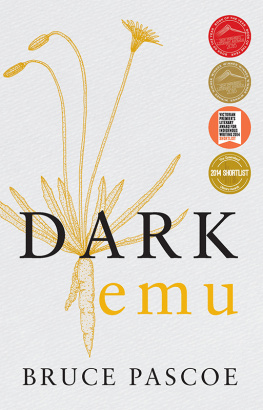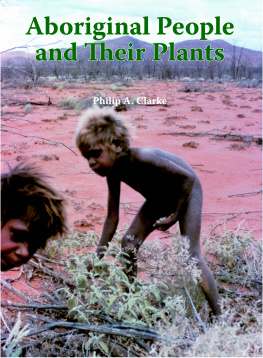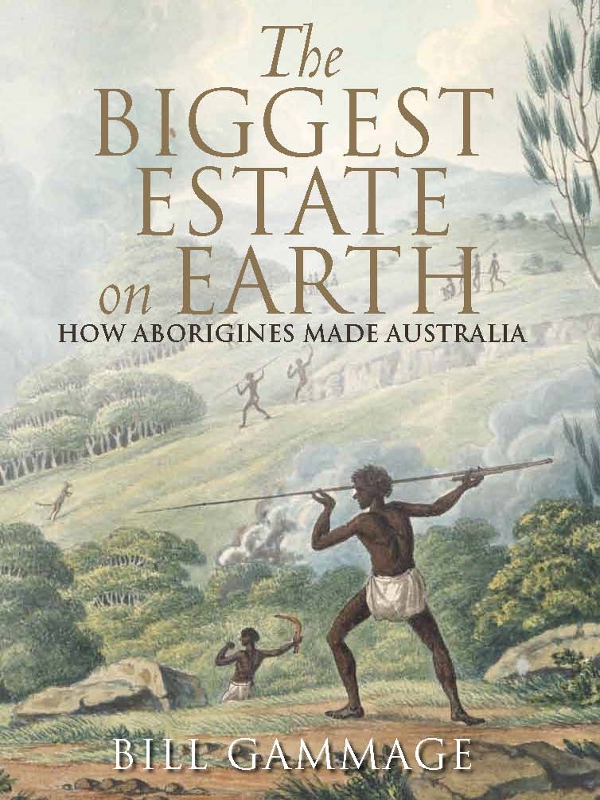
The
BIGGEST
ESTATE
on EARTH
Other books by Bill Gammage
The Broken Years: Australian Soldiers in the Great War
An Australian in World War I
Narrandera Shire
The Sky Travellers: Journeys in New Guinea 19381939
Co-authored:
The Story of Gallipoli
Co-edited:
Australians 1938
Crown or Country: The Traditions of Australian Republicanism
Hail and Farewell: Letters from Two Brothers Killed in France in 1916
Six Bob a Day Tourist
The
BIGGEST
ESTATE
on EARTH
HOW ABORIGINES MADE AUSTRALIA
BILL GAMMAGE

First published in 2011
Copyright Bill Gammage 2011
All rights reserved. No part of this book may be reproduced or transmitted in any form or by any means, electronic or mechanical, including photocopying, recording or by any information storage and retrieval system, without prior permission in writing from the publisher. The Australian Copyright Act 1968 (the Act) allows a maximum of one chapter or 10 per cent of this book, whichever is the greater, to be photocopied by any educational institution for its educational purposes provided that the educational institution (or body that administers it) has given a remuneration notice to Copyright Agency Limited (CAL) under the Act.
Allen & Unwin
Sydney, Melbourne, Auckland, London
83 Alexander Street
Crows Nest NSW 2065
Australia
Phone: (61 2) 8425 0100
Fax: (61 2) 9906 2218
Email: info@allenandunwin.com
Web: www.allenandunwin.com
Cataloguing-in-Publication details are available
from the National Library of Australia
www.trove.nla.gov.au
ISBN 978 1 74237 748 3
Internal design by Nada Backovic
Set in 11/15.5 pt Caslon Classico Regular by Post Pre-press Group, Australia
Printed in China at Everbest Printing Co.
10 9 8 7 6 5 4 3 2 1
To the people of 1788,
whose land care is unmatched,
and who showed what it is to be Australian
Fire, grass, kangaroos, and human inhabitants, seem all dependent on each other for existence in Australia; for any one of these being wanting, the others could no longer continue. Fire is necessary to burn the grass, and form those open forests... But for this simple process, the Australian woods had probably continued as thick a jungle as those
of New Zealand or America...

THOMAS MITCHELL, SYDNEY, JANUARY 1847
... observing that the grass had been burnt on portions of the flats the Blacks said that the rain that was coming on would make the young grass spring up and that would bring
down the kangaroos and the Blacks would spear them from the scrub.

OSWALD BRIERLY, EVANS BAY, CAPE YORK, 1 DECEMBER 1849
CONTENTS
by Henry Reynolds
All illustrations are in chapter 2.

This book is about achievements of people I never knew. Far too late, I thank them.
Before everyone else I thank my wife Jan. She has always helped my work, but for this book more than any other she gave up much, with extraordinary patience and good humour over many years. She made the book possible.
I next thank three friends, clear-eyed readers: Henry Nix, Henry Reynolds and Denis Tracey, for polishing a draft and for help along the way. I thank Henry Reynolds especially, for years of encouragement, and for his generous foreword.
I thank the Humanities Research Centre at the ANU for hosting my research, and an ARC Fellowship for generously supporting part of it. I thank Pip Deveson, Leena Messina, Mike Powell, Jill Waterhouse and especially Gurol Baba for help with images, and I thank the staff of the archives and libraries listed in the Abbreviations, especially my friends at the National Library of Australia. I thank Elizabeth Weiss at Allen & Unwin for her promptness, courtesy and efficiency.
The following list makes clear how impossible it is to thank as they deserve the many other people who helped me:
ACT: Bryant Allen, Don Baker, John Banks, Tim Bonyhady, Ian Brooker, Phil Cheney, Bill Clarke, Bob Cooper, Jan Cooper, Helen Digan, Mary Eagle, Brian Egloff, Barney Foran, Kevin Frawley, Alison French, Ian Gammage, Jake Gillen, Jack Golson, Janda Gooding, Peter Greenham, Chris Gregory, Niel Gunson, Stuart Hay, Luise Hercus, Robin Hide, Geoff Hope, Iain McCalman, Neal McCracken, Kim McKenzie, George Main, Sally May, John Merritt, Howard Morphy, John Mulvaney, Daphne Nash, Hank and Jan Nelson, Jim Noble, Penny Olsen, David Paterson, Nic Peterson, Tony Vale, Gerry Ward, Elizabeth Williams.
France: Laurent Doussot.
NSW: John Blay, Denis Byrne, Janet and Jim Fingleton, Nic Gellie, David Goldney, Helen Harrison, David Horton, Christine Jones, Ian Lunt, John McPhee, Chris Moon, Eric Rolls and Elaine van Kempen, Yuji and Hiroko Satake, Rob Sellick, Stan Walton, Peter and Bunty Wright.
NT: Dave Bowman, Jim Cameron, David Carment, Stuart Duncan, Ted Egan, Margaret Friedl, Punch and Marilyn Hall, Dick Kimber, Chris Materne, Julia Munster and Sam Spiropoulis, Vern OBrien, Tom Vigilante, James Warden, Samantha Wells.
NZ: Ian Campbell.
Queensland: John Bradley, Athol Chase, Mac Core, Arch Cruttenden, Russell Fairfax, Rod Fensham, Bill Kitson, Kate Lovett (Steve Parish Publishing), Yuriko Nagata and Terry Martin, Melissa Nursey-Bray, Anna Shnukal, Brian and Jenny Wright.
SA: Carmel and Eric Bogle, Philip Clarke, Rob Foster, Tom Gara, Diana Honey, Rob Linn, Leith MacGillivray, John and Sue McEntee, Jean and Ron Nunn, Bernie ONeil, Mick Sincock, Peter Sutton.
Tasmania: Jayne Balmer, Mick Brown, Graeme Calder, Sib Corbett, Fred Duncan, Louise Gilfedder, Andrew Gregg, David Hansen, Margaret Harman, Bill Jackson, Jamie Kirkpatrick, Greg Lehman, Jon Marsden-Smedley, Bruce McIntosh, Bill Mollison, Mike Pemberton, Edwina and Mike Powell, Mitchell Rolls, Lindy Scripps, Bill Tewson, Ivor and Sheila Thomas.
Victoria: Corinne Clark, Peter Coutts, Julia Cusack, Beth Gott, Jeanette Hoorn, Lynne Muir, Mathew Phelan, Judy Scurfield, Frances Thiele, Ian Thomas.
WA: Geoff Bolton, Jack Bradshaw, Neil Burrows, Peter Gifford, Ian Rowley, George Seddon, Tom Stannage, Roger Underwood, Dave Ward.

Few sources here come directly from Aboriginal people. Over the years Aboriginal friends and acquaintances in Narrandera, Alice Springs, the Coorong and northern Tasmania have taught me, but this book discusses all Australia, and I had neither the time nor the presumption to interrogate people over so great an area on matters they value so centrally. Instead there are three main source categories:
writing and art depicting land before Europeans changed it
anthropological and ecological accounts of Aboriginal societies today, especially in the Centre and north
what plants tell of their fire history and habitats.
Next page
